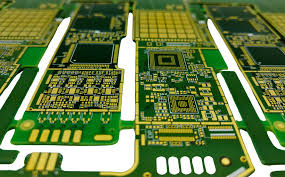Greater Grant and Flexibility
Flex PCBs (Flexible Printed Circuit Boards) provide the flexibility required by a modern day electronic gadgets. Because flex PCBs can bend, twist, and fold, they can be designed into places where rigid boards simply cannot. This is particularly useful in small, complex devices such as smartphones, wearable products, and medical devices. This flexibility is what allow designers to create innovative arrangements and maximise space usage.
Stress Resiliency Improvement
The most obvious advantage to using flex PCB is the added mechanical stability. These boards are typically constructed of either polyimide or polyester film, and they are both solid and bendable. They are capable of flexing through thousands of flex cycles without failure. Flexible PCB research available on the web confirms that flex PCBs, if not flexing to performance beyond 200,000 bend cycles, there is no noticeable wear. In situations where the material will deprive for durable time under or related movement- say, in flexible screens or foldable electronics- this stamina is especially serious.
Weight and Space Efficiency
Flex PCBs also weigh less and are thinner than standard rigid PCBs, making them ideal for use in weight-sensitive applications. They are usually around 70% lighter than the weight of rigid boards which is a huge deal in devices where weight and balance are important, like it is in the case of aerospace technology. More importantly, the thinness of flex PCBs, typically ranging from 0.1 mm to 0.3 mm in thickness, enables a streamlined design, reducing the thickness of the device altogether and promoting portability.

Low-cost for intricate designs
The up-front investment in a flex PCB may be higher (especially when you consider their specialized materials and manufacturing processes), but in the long run, flex and rigid-flex are far more cost-effective for complex assemblies. By allowing assembly of reflects and connectors include single rigid board flat cable, printed circuit board (PCB) design with flex they serve to provide flexibility. Additionally, the integrated design eliminates the number of parts required which simplifies overall assembly while reducing the chance of connection failures resulting in in reduced manufacturing costs.
Enhanced Heat Dissipation
With the added benefit of heat dissipation being slightly safer as well with a flex PCB than a rigid one. The materials used in flex PCBs, especially polyimide, offer good thermal stability and can be efficiently used within a broad temperature spectrum. These materials help to dissipate heat, so devices perform better and last longer at cooler temperatures. In high-performance electronics such as these, the feature is particularly useful because extra heat can cause un-ideal issues over the functionality of a period of time.
Application Versatility
Flex PCBs are versatile and found in industries as varied as consumer electronics, automotive, and military applications. Its ability to bridge isolated parts of a device, while allowing for the device to be shaped and curved, represents a revolutionary advance in design and engineering - for designers, engineers, and makers.
Visit our in-depth resource page to learn more about what flex pcb can do, and the benefits it can offer.
Flex PCBs have disrupted the rigid PCB technology that was once the standard, their capability to alter in almost any design and improve the reliability and go beyond the features of their electronic assembly precedes itself in ways traditionally not seen. Their application results in nuclear electronic devices that are more innovative, reliable and concise.